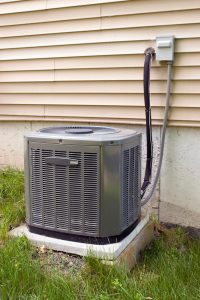 Winter may not be the best time to install a new heating system in your home. However, if you are in the market for a new heater right now you probably don’t have much of a choice. You don’t want to go without a heating system any longer than you have to, even in a place like California. If you’re looking to have a new heater installed, you should take a look at what a heat pump system can offer. Let’s go over how a heat pump operates, what makes it different from other types of heating systems, and the advantages that one can offer you if you install it this winter.
Winter may not be the best time to install a new heating system in your home. However, if you are in the market for a new heater right now you probably don’t have much of a choice. You don’t want to go without a heating system any longer than you have to, even in a place like California. If you’re looking to have a new heater installed, you should take a look at what a heat pump system can offer. Let’s go over how a heat pump operates, what makes it different from other types of heating systems, and the advantages that one can offer you if you install it this winter.
How can I maintain my heat pump for long-term efficiency and comfort?
- Replace or clean the air filter every 1-3 months to maintain healthy airflow.
- Keep the outdoor unit clear of debris, leaves, and snow; trim back vegetation to allow proper air circulation.
- Clean both indoor and outdoor coils periodically to improve heat transfer efficiency.
- Schedule professional maintenance annually (in spring or fall) to check refrigerant, electrical connections, blower, thermostat, and overall system calibration.Monitor performance and inspect for unusual noises, icing, or airflow issues, these may signal the need for service.
How Heat Pumps Work in Modern Homes
A heat pump is pretty close to an air conditioner in terms of how it’s constructed. The only major difference is the reversing valve, which allows it to switch between heating and cooling modes. This dual functionality makes it an excellent choice for year-round comfort. If you’re still weighing options, take a look at how to choose between a heat pump or central AC to make the best decision for your home. This part is vital for allowing the heat pump to do what it does, though. And what the heat pump does is offer both heating and cooling functions on demand. It does this by reversing the direction that refrigerant flows through its system. In cooling mode, the indoor unit absorbs heat and the outdoor unit vents it. In heating mode, the reverse is true, with the outdoor unit absorbing heat from the surrounding air and the indoor unit venting it into the home. You can explore more about this dual functionality on our residential heat pump services page.
Key Benefits of Installing a Heat Pump
The first and most obvious advantage to using a heat pump is that of convenience. Using just one system for heating and cooling provides both energy efficiency and space-saving benefits. Since heat pumps don’t burn fuel to generate heat, they are environmentally friendly and cost-effective. Learn more about how heat pumps curb emissions and save money while maintaining a comfortable home year-round. The only time when heat pumps struggle with heating efficiently is in extremely cold environments, where the temperature regularly drops far below freezing. Here in California, that’s not something you need to worry about.
Heat Pump Maintenance: What to Expect
It’s always a good idea to schedule maintenance for your heating and air conditioning systems, usually once a year. However, things are a little different with heat pumps.
Since heat pumps operate throughout the year, scheduling maintenance twice a year is recommended to extend the system’s lifespan and prevent costly breakdowns. For more insight on maintaining efficiency, explore why your heat pump might be running for so long and how to address potential issues early on. If you want to keep your heat pump in good condition, you should actually schedule preventive maintenance at least twice a year. This will help counteract the added wear and tear on the system, and extend its effective lifespan. Make sure you consult with a professional about the best time to schedule maintenance for your heating system. To learn more about available models and professional installation options, visit our dedicated heat pump heating page.
Comfy Heating & Air Conditioning Inc. provides comprehensive heat pump installation services in Fremont, CA. Contact us today to schedule an appointment with one of our expert technicians.
